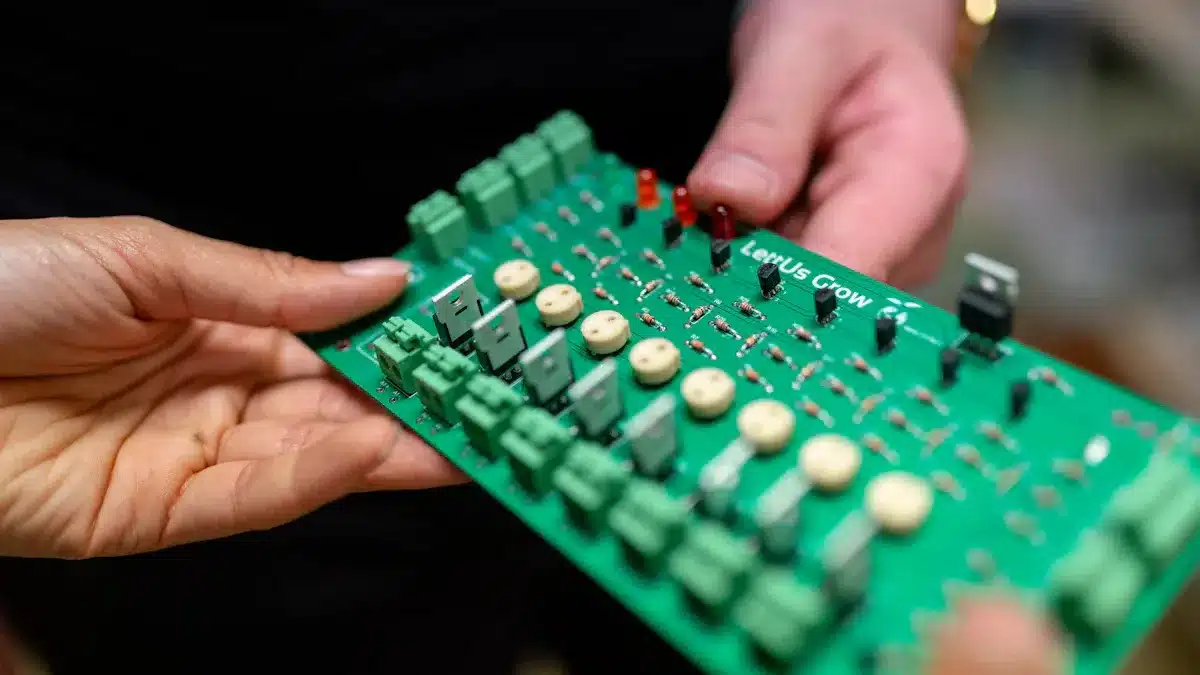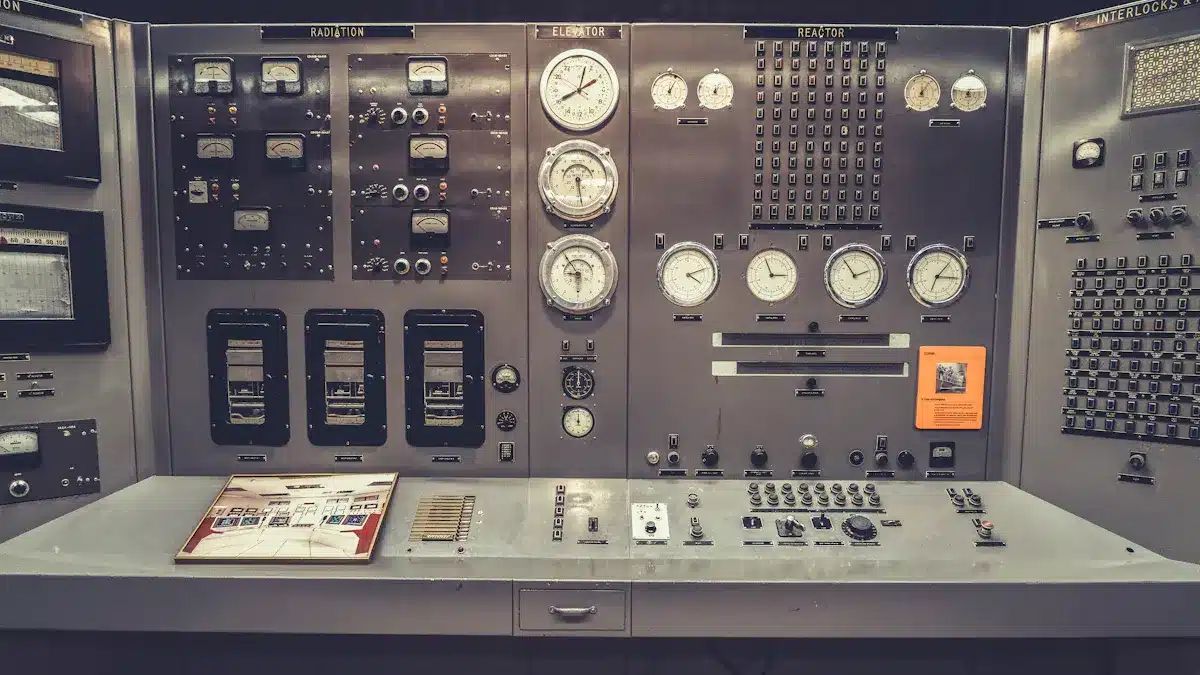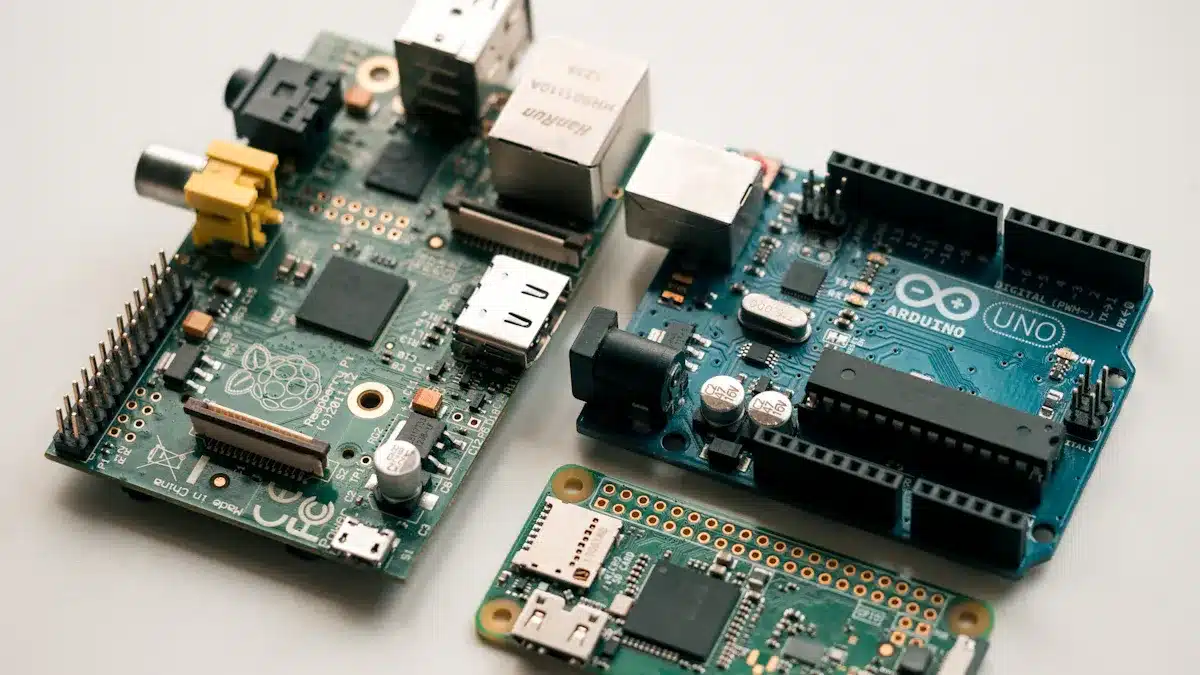
Choosing the right control board is very important for your electronics projects in 2025. You need to think about several things to make a good choice regarding the control board. These considerations include how it works, how easy it is to use, and what you need it for. For example, the power requirements of a project can help you pick the best control board. Additionally, knowing about size and packaging can help you fit the control board into your design well. By paying attention to these points, you can improve your project’s performance and reliability.
Key Takeaways
Picking the right control board is very important for your electronics projects. Think about things like power needs, size, and how easy it is to use.
The Arduino Uno is great for beginners because it is simple and has a strong community. It works well for many DIY projects.
The ESP32 has built-in Wi-Fi and Bluetooth. This makes it a good choice for IoT projects. Its flexibility allows for many creative ideas.
When choosing a control board, make sure it fits your project’s voltage, interface, and size needs for the best performance.
Money matters too. Better quality boards might cost more, but they can offer better reliability and features for your projects.
Overview of Control Boards

What is a Control Board?
A control board, especially a microcontroller board, is very important in electronics projects. It is a circuit board that helps build embedded systems. This board has key parts like a microcontroller, input/output (I/O) pins, a power supply, and communication interfaces. These parts let you write, test, and control electronic devices in real-time. By using a control board, you can make building complex electronic systems easier.
Importance in DIY Electronics Projects
Control boards are very important in DIY electronics projects. They give the needed support for electrical connections and component integration. When you pick the right control board, it greatly affects your project’s performance, reliability, and cost. Here are some main jobs of control boards in modern electronics projects:
Processing Data – Runs instructions from embedded firmware or software.
Input/Output Management – Connects with buttons, sensors, displays, and actuators.
Power Regulation – Keeps voltage and current steady.
Communication – Works with protocols like UART, SPI, I²C, CAN, USB, or Ethernet.
System Control – Offers timing, sequencing, and decision-making logic.
When you choose a control board, think about the type of board, materials, quality, and application needs. These factors will help you create successful DIY electronics projects that fit your needs.
Best Control Boards for 2025

Arduino Uno
The Arduino Uno is a top pick for many DIY electronics projects in 2025. This open-source board uses the ATmega328P microcontroller. It runs at a clock speed of 16 MHz. With 32 KB of flash memory and 2 KB of SRAM, it has enough space for your code. The Arduino Uno is easy to use, making it great for beginners.
Key Features:
Digital I/O Pins: 14, with 6 that can do PWM.
Analog Input Pins: 6.
Power Sources: USB, VIN pin, and DC power jack.
Common Projects:
DIY Air Quality Monitor
Autonomous Obstacle-Avoiding Robot Car
IoT Weather Station with Dashboard
Gesture-Controlled Home Automation
The Arduino Uno is perfect for testing ideas and projects needing many I/O connections. Its flexibility and simplicity make it a must-have in DIY electronics.
Feature | Specification |
|---|---|
Microcontroller | ATmega328P (8-bit AVR core) |
Clock Speed | 16 MHz |
Flash Memory | 32 KB (0.5 KB used by bootloader) |
SRAM | 2 KB |
EEPROM | 1 KB |
Size | 68.6 mm x 53.4 mm |
Raspberry Pi Pico
The Raspberry Pi Pico is another great option for electronics projects. It has a dual-core ARM Cortex-M0+ processor that runs up to 133 MHz. This board is made for low power use, so it works well for battery-powered projects.
Key Features:
Instant Startup: Turns on right away, great for quick tasks.
Real-Time Processing: Handles time-sensitive jobs well.
Limitations:
Cannot run a full operating system, which limits multitasking.
The Pico is best for projects needing real-time processing and low power, like portable devices and sensors.
ESP32
The ESP32 is a strong control board that has Wi-Fi and Bluetooth. It runs at a clock speed of up to 240 MHz and has a dual-core processor. This board is small and cheap, making it popular for IoT projects.
Key Features:
Built-in Wi-Fi and Bluetooth: Great for wireless connections.
Versatile GPIO Pins: Has 30 GPIO pins for many uses.
Common Applications:
Smart home lighting control
Environmental monitoring
Wearable electronics
The ESP32’s flexibility and connection options make it a favorite for IoT developers.
Teensy 4.1
The Teensy 4.1 is known for its amazing processing speed. It has an ARM Cortex-M7 processor that runs at 600 MHz, making it one of the fastest boards. This board can do both single and double-precision floating-point operations, which adds to its usefulness.
Key Features:
55 GPIO Pins: Lots of I/O options for different uses.
High-Speed USB Support: Allows fast data transfer.
Best Use Cases:
Audio processing
Robotics
Real-time data processing
The Teensy 4.1 is great for tough tasks that need fast processing and many I/O options.
STM32F4 Series
The STM32F4 Series has many powerful microcontrollers for different uses. It has an ARM Cortex-M4F core and runs at speeds up to 180 MHz. This series is known for its many features and advanced options.
Key Features:
Multiple ADCs: Four fast, 12-bit ADCs for accurate data collection.
DSP and Floating-Point Support: Good for complex math tasks.
Common Use Cases:
Multimedia projects
Industrial applications
The STM32F4 Series is a strong choice for projects needing high performance and advanced features.
Feature | Description |
|---|---|
Core | ARM Cortex-M4F core at a maximum clock rate of 180 MHz. |
Memory | Up to 192 KB RAM and different Flash sizes. |
Peripherals | Includes USB 2.0 OTG, CAN, SPI, I²C, and more. |
BBC Microbit
The BBC Microbit is made for education, making it a great choice for beginners. It has a simple interface and can be programmed with free online tools.
Key Features:
Small Size: Easy to use and fit into projects.
Compatibility: Works with Scratch and other learning platforms.
Limitations:
Limited RAM (16kB), which may limit complex projects.
The Microbit is perfect for teaching coding and electronics in schools.
Seeed Xiao RP2040
The Seeed Xiao RP2040 is a small but powerful control board. It has the RP2040 microcontroller, which gives great performance for its size.
Key Features:
Rich Interfaces: Supports many uses with multiple I/O options.
Compact Size: Great for small projects.
Best Use Cases:
Small form factor applications
Machine learning projects
The Seeed Xiao RP2040 is a smart choice for projects needing a small size without losing performance.
Comparative Analysis of Best Circuit Boards
When you pick a control board for your projects, knowing the good and bad sides of each choice helps you decide better. Here’s a comparison of the best control boards for 2025.
Strengths and Weaknesses
Control Board | Strengths | Weaknesses |
|---|---|---|
Arduino Uno | Easy to use, lots of community help | Not strong enough for tough tasks |
Raspberry Pi Pico | Uses little power, works in real-time | Can’t run a full operating system |
ESP32 | Has Wi-Fi and Bluetooth, many GPIO pins | Harder to program than Arduino |
Teensy 4.1 | Fast processing, many I/O options | Costs more than basic boards |
STM32F4 Series | Has advanced features, many ADCs | Harder for beginners to learn |
BBC Microbit | Good for learning, simple to use | Not enough RAM for complex tasks |
Seeed Xiao RP2040 | Small size, many interfaces | Less community support than others |
Tip: Think about the good and bad sides of each board based on what your project needs. This will help you choose the best control board for you.
Best Use Cases
Each control board works best in certain situations. Here’s a list of the best uses for each board:
Control Board | Best Use Cases |
|---|---|
Arduino Uno | DIY electronics projects, testing ideas |
Raspberry Pi Pico | Battery-powered gadgets, real-time tasks |
ESP32 | IoT projects, smart home gadgets |
Teensy 4.1 | Audio work, robotics |
STM32F4 Series | Industrial work, multimedia projects |
BBC Microbit | Learning projects, beginner coding |
Seeed Xiao RP2040 | Small projects, machine learning |
By knowing these uses, you can match your project goals with the right control board. This way, you can get the most out of your DIY electronics projects.
How to Choose the Right Control Board
Choosing the right control board for your project can seem hard. But if you focus on a few important things, it gets easier. Here’s how to make a smart choice.
Compatibility with Project Requirements
When picking a control board, make sure it fits your project’s needs. Think about these compatibility points:
Voltage Compatibility: Check if the board works at 3.3V or 5V. This affects how you connect sensors and other parts.
Available Interfaces: Look at the interfaces you need, like USB, UART, I2C, or SPI. These connections show how your board talks to other devices.
Pin Configuration: Check the pin layout. Make sure it matches the parts you want to use.
Power Supply Options: Look at the power supply needs. Ensure the board can handle the voltage levels for your parts.
Onboard Features: Think about any built-in features that might affect your choice of parts, like integrated Wi-Fi or Bluetooth.
Form Factor and Size: Consider the size of the board. Make sure it fits in your project’s design.
By looking at these points, you can choose a control board that fits your project well.
Programming Languages and Support
The programming language you want to use can affect your choice of control board. Many popular open-source boards, like the Arduino Uno and Raspberry Pi Pico, support easy programming environments. Here are some things to think about:
Language Compatibility: Make sure the board supports the programming language you know. For example, Arduino IDE is popular for Arduino boards, while MicroPython is common for the ESP32.
Community Support: A strong community can give you helpful resources, tutorials, and troubleshooting help. Boards with many users often have lots of guides and forums.
Development Tools: Check if the board has tools that work well with it. This can include IDEs, libraries, and debugging tools that make programming easier.
Choosing a board with good programming support can make your development experience better and help you solve problems faster.
Budget Considerations
Your budget is important when choosing a control board. Better-quality boards usually cost more. Here are some budget points to remember:
PCB Classification: The type of printed circuit boards (PCBs) affects quality and price. Higher classes, like Class III, offer better reliability but cost more to make.
Surface Finishes: The type of surface finish can change your budget. Traditional finishes like Hot Air Solder Leveling (HASL) are cheaper, while advanced finishes, like immersion gold, can cost more. Think about your project’s performance needs when choosing a finish.
Compliance Costs: If your project needs to follow rules, like ITAR, be ready for higher costs due to strict material and supply chain rules.
By knowing these budget points, you can make a choice that balances quality and cost, keeping your project within budget.
Picking the right control board is very important for your electronics projects. The board you choose can greatly affect how well your project does. Here are some important things to keep in mind:
Choosing the right circuit board company is key for success.
Testing the control board helps check your design in real situations.
Look at the options in this blog. Each control board has special features that can improve your projects. By knowing what you need and what each board can do, you can make smart choices that lead to great results. Happy building! 🚀
FAQ
What is the best control board for beginners?
The Arduino Uno is perfect for beginners. It has a simple interface and lots of community help. This makes it easy to learn and try out electronics projects.
Can I use multiple control boards in one project?
Yes, you can use more than one control board in a project. Just make sure they can talk to each other using compatible connections like I2C or UART.
How do I power my control board?
Most control boards can get power from USB or an outside power source. Check the specs for voltage needs to avoid breaking it.
Are there any free resources for learning about control boards?
Yes! Websites like Arduino, Raspberry Pi, and YouTube have free tutorials, guides, and forums. These can help you learn about control boards and electronics.
How do I choose the right programming language for my control board?
Pick a programming language that works with your control board. Popular choices are C/C++ for Arduino and MicroPython for ESP32. Think about how comfortable you are with each language.
See Also
The Role of PCBA in Advancing Today’s Electronics
Streamlined PCBA Solutions for Quick Electronics Projects
The Benefits and Drawbacks of Flexible PCBA Today
Emerging Trends in PCB and PCBA Manufacturing Processes
Exploring PCBA Applications Within Consumer Electronics Industry